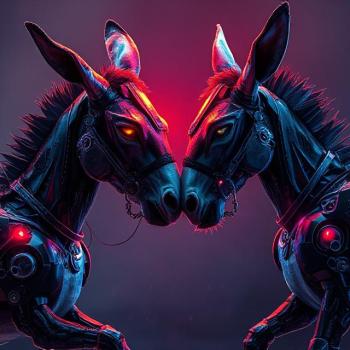From her images of the “great, dark trees of the Big Woods” to the endless grass of the prairies in the west, Laura Ingalls Wilder’s depictions of frontier life for America’s pioneers in her beloved “Little House” series of children’s books have won her countless fans. Now the writer’s autobiography, from which she drew the material that has delighted readers for decades, will be published this autumn for the first time, more than 80 years after she first wrote it.
Wilder’s Pioneer Girl, the story of her childhood, was begun by the author in 1930, when she was in her early 60s, but was rejected by editors at the time. It contains stories omitted from her novels, tales that Wilder herself felt “would not be appropriate” for children, such as her family’s sojourn in the town of Burr Oak, where she once saw a man became so drunk that, when he lit a cigar, the whisky fumes on his breath ignited and killed him instantly. In another recollection, a shopkeeper drags his wife around by her hair, pours kerosene on the floor of his house, and sets their bedroom on fire.
Wilder’s memoir also paints a different picture of her father, Charles Ingalls, known in the novels as Pa. Although the real man’s character is essentially the same as the version in the novels – affectionate, musical and restless to move on through America’s frontier – he is, said the book’s publisher, the South Dakota Historical Society Press, clearly “romanticised and idealised”. In Wilder’s autobiography, he is described sneaking his family out of town in the middle of the night after failing to negotiate the rent with the landlord, justifying the flit by calling the man a “rich old skinflint”.
Detailing the Ingalls family’s journey through Kansas, Missouri, Wisconsin, Minnesota, Iowa, back to Minnesota, and on to Dakota Territory, the book failed to win over publishers at the time. So Wilder reworked it into her series of children’s books, starting with Little House in the Big Woods, in which a four-year-old Laura lives “in the Big Woods of Wisconsin, in a little gray house made of logs”, with her Pa and Ma, her sisters Mary and Carrie, and their dog, Jack. “As far as a man could go to the north in a day, or a week, or a whole month, there was nothing but woods. There were no houses.”
The South Dakota Historical Society Press will release a researched version of the book for the first time this autumn, including more than 100 images, maps, and hundreds of annotations drawn by editor Pamela Smith Hill, author of a biography of Wilder, from additional manuscripts, diaries and letters.
“Wilder’s fiction, her autobiography, and her real childhood as she lived it are three distinct things, but they are all closely intertwined, and readers will enjoy seeing how they reflect one another. Even more interesting, though, are the places where one story differs from another, and Pioneer Girl: The Annotated Edition explores these differences too,” said Nancy Koupal, the publisher’s director.











